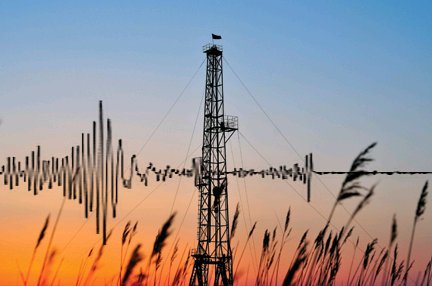A report from independent experts into seismic risk associated with hydraulic fracturing commissioned by the UK’s Department of Energy and Climate Change (DECC) was released in London today.
 The report reviews data on small-scale earthquakes that occurred during fracking of the Preese Hall site near Blackpool in April and May 2011. It concludes that the tremors were caused by fracking, and recommends taking steps to mitigate future seismic risk, including:
The report reviews data on small-scale earthquakes that occurred during fracking of the Preese Hall site near Blackpool in April and May 2011. It concludes that the tremors were caused by fracking, and recommends taking steps to mitigate future seismic risk, including:
- A smaller pre-injection and monitoring stage for hydraulic fracturing procedures
- An effective monitoring system that provides near real-time locations and magnitudes of seismic events
- A “traffic light” control regime. (A red light at activity levels of magnitude of 0.5 or above means fracking should be stopped and remedial action taken)
The full report, press statement and backgrounder are available from the DECC website.
Expert response to an earlier industry report on the Blackpool quakes, published in 2011, can be found here.
The UK Science Media Centre gathered the following commentary. Feel free to use these quotes in your reporting. For further information contact the SMC on (04) 499 5476, smc@sciencemediacentre.co.nz
Prof Andrew Aplin, School of Civil Engineering and Geosciences at Newcastle University, said:
“I welcome this detailed appraisal of the induced seismic activity at the Preese Hall site, which gives cautious support to continued drilling for a potentially important energy resource. We know already that hydraulic fracturing can cause small-scale earthquakes but this study, along with others in the US, shows that they are of insufficient magnitude and extent to cause structural damage or to allow gas or chemicals to leak into much shallower drinking water aquifers. I also note the strict protocols recommended to mitigate future seismic risk, which it would be wise to follow during these early stages of UK shale gas exploration.”
Prof Quentin Fisher, Professor of Petroleum Geoengineering at the University of Leeds, said:
“The findings of this independent report are consistent with results from a huge number of shale gas operations in the USA (>10,000 fracture treatments are conducted every year) that indicate hydraulic fracturing is safe and is highly unlikely to result in seismic activity that will cause structural damage in the local area. The report also correctly highlights the fact that the fractures created during hydraulic fracturing operations extend anywhere near regional aquifers and will therefore not result in groundwater contamination.
“The conclusion reached by this independent group of experts, that hydraulic fracture operations for shale gas should be allowed to proceed in both at the Preese Hall site and other potential sites in the UK, is totally backed up by evidence by a wealth of data from the USA where hydraulic fracturing of shale gas plays is routine.
“The report recommends that a series of measures that should be adopted to minimize seismic risks in future hydraulic fracture operations conducted onshore in the UK. These recommendations seem sensible in the short-term but should be constantly reviewed as more data becomes available to ensure that they do not result in over-the-top regulations that unnecessarily restrict the development of shale gas plays within the UK.
“Overall, this report that adds to a large body of evidence indicating that hydraulic fracturing is a commonly used industrial practise that is very safe when conducted by responsible operators”.
Prof Stuart Haszeldine, School of GeoSciences at the University of Edinburgh, said:
“This report for DECC starts to put UK shale gas exploration on a more secure base. Installing much better local monitoring is the best way forward, and is what should have been done at the beginning.
“There is very little chance of avoiding pre-existing geological faults. This part of Lancashire is like a pack of playing cards vertically between two books – very slippery planes of movement.
“The M 0.5 limit for earthquake size has been sensibly chosen much lower than that suggested by the developers. That is because of the technical uncertainty in sampling the spread of possible larger earthquakes. Even if an earthquake 200 times larger occurs, of M 3.0, the effects at surface will just make the pictures rattle on the wall in your living room.
“The traffic light system can be refined for a particular location. If multiple fracking boreholes are drilled, a less-intensive suite of monitoring equipment needs to be operated for several years after the initial fracking.
“Although it is not considered in this report, Government also needs to pay attention to earthquake risks of disposing of flow-back water by injection into the subsurface after fracking, and to remediation of surface land following drilling operations.”